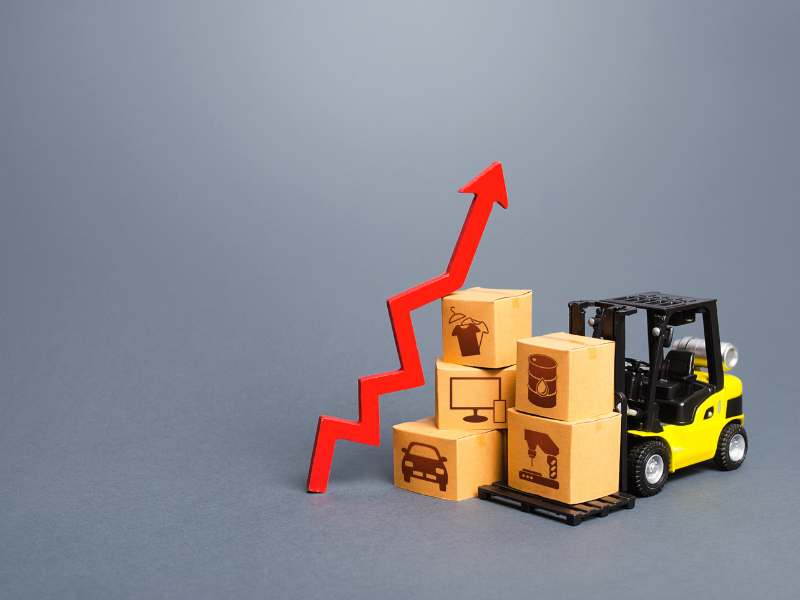Stock waste is the situation of any inventory management system which has become unusable, unsold or lost thereby causing a financial loss and inefficiencies in the company. This may include the overstocking, obsolete items, damaged goods, expired products, and even inventory that is simply misplaced or lost within the warehouse are the waste stock.
Understanding the Causes of Stock Waste
Overproduction

If you overproduce stock in anticipation, you not only have the high-cost overhead of stock on hand, but you might get stuck with unsellable stock.
Inadequate Storage and Handling
Poor storage and handling practices result in storage waste through spoilage, damage, and contamination, leaving goods unusable or unfit for consumption or use.
Inefficient Inventory Tracking
Because businesses rely on inventory to plan and execute their daily operations, poor tracking causes them to keep more inventory than necessary which increases over stock. This is more product that needs a place to be stored, which means additional rental and utility expenses, and sometimes even the need to find extra space to warehouse it.
Transportation
Frequent transportation and handling increases the risk of damage or loss and every moment your loaded trucks sit in a loading dock is a form of inventory waste.
Smart Inventory Management Tactics
Just-In-Time (JIT) Inventory System

Just in time inventory management guarantees there is exactly enough inventory to create only what you need, when you need it. The objective is to maximize efficiency and get rid of waste by producing large amounts with little inventory on hand.
The JIT model cuts the expenses of storing, handling, and obtaining surplus inventory and raw elements. This raises inventory turnover, which stops goods from gathering dust in your warehouse and becoming outdated.
ABC Analysis to Prioritize Inventory
Based on their general worth to the company, an ABC analysis technique establishes which inventory items are most important, therefore giving more weight to essential on hand items and less to less important in the long run.
For companies, ABC analysis helps to maximize resource allocation, concentrate on high priority inventory (A items), better control cost, support strategic decision making, find deficits for improvement, and allow more practical budgeting based on precise cost.
Implementing FIFO
This is a simple inventory valuation technique that presumes things first made or purchased will be sold first. In theory, this means that customers receive the oldest merchandise first and thereafter the newest.
Using FIFO (First-In, First-Out) in inventory management provides many advantages including simpler recordkeeping, lower waste, better product quality, and possible higher reported profits—particularly during inflationary times.
Leveraging Technology to Minimize
Barcode and RFID Tracking

Steadily changing many fields, radio frequency identification (RFID) technology offers the food industry no exemption. Realtime tracking and data collection by means of RFID gives extraordinary benefits for supply chain management.
By facilitating real-time, precise inventory management, avoiding overstocking, lowering errors, and minimizing losses, barcode and RFID tracking improve stock control and cut waste.
Inventory Management Software
By offering real-time tracking, precise demand forecasting, and automatic ordering, inventory management software helps organizations prevent spoiling, understocking, and overstocking, eventually optimizing inventory levels and avoiding waste.
Smarter Inventory Means Less Waste and More Savings
Reducing stock waste helps businesses operate more intelligently and efficiently, not only save money. Making meaningful improvements is made simpler when you comprehend the root causes, such as overproduction, inadequate storage, and tracking problems. Although minor issues like misplaced or broken inventory can easily mount up, careful planning keeps things moving forward.
You have more control over what comes in and goes out when you use clever strategies like Just-In-Time, FIFO, and ABC analysis. By using these techniques, you may prevent overstocking and maintain a usable and fresh inventory. Additionally, they ensure that your funds and assets are being used where they are most needed.
Technology is also very beneficial. Accurate record-keeping and product tracking are made simpler by barcode systems, RFID, and inventory software. Managing everything in real-time reduces waste and mistakes. Working smarter, not harder, is the key.

